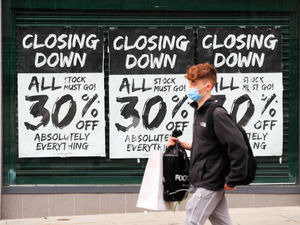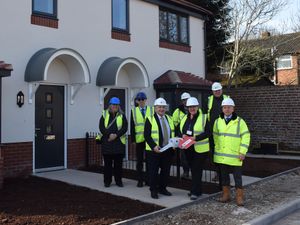Unemployment rate jumps in West Midlands, latest figures show
The unemployment rate in the West Midlands has risen again for the three months to May.
According to figures from the Office for National Statistics, the total number unemployed across the region now stands at 152,000, with the jobless rate standing at 5 per cent.
That was compared to 4.8 per cent in the three months up to April.
Nationally, the rate of UK unemployment rose to 4 per cent in the three months to May, up from 3.8 per cent in the previous three months, latest figures showed.
Economists had predicted a reading of 3.8 per cent for the latest quarter.
Meanwhile, average regular wages, not including bonuses, were 7.3 per cent higher in the three months to May, the same as during the previous three months and the joint highest since records began in 2001.
ONS director of economic statistics Darren Morgan said: “Total employment grew in the latest three months while the number of people actively looking for work also increased, both driven by men rejoining the labour market.
“Pay excluding bonuses has again risen at record levels in cash terms.Due to high inflation, however, the real value of weekly earnings are still falling, although now at its slowest rate since the end of 2021.”
Statistics for those claiming unemployment benefits in the West Midlands, including Universal Credit, was, however, down – 181,655 compared to 182,185 last month.
In Wolverhampton, the number of claimants stood at 12,765, up 30 on the previous month and standing at 7.7 per cent of the working population.
Sandwell's figures stood at 13,570 claimants, down 70 on the previous month while Walsall's claimant figures stood at 9,890, down on last month's 9,925.
In Dudley, the number of claimants was 9,105 (4.6 per cent of the working population).
In Birmingham, the number claiming unemployment benefits, including Universal Credit, was 63,090 (8.6 per cent of the working population), down from 63,440 the previous month.
In Staffordshire, the number of claimants fell slightly to 15,300 from 15,385.
The number of claimants in Cannock Chase stood at 2,170 while in the Lichfield, the claimant count is 1,540, down from 1,590 previously.
For South Staffordshire, the number of people claiming unemployment benefits, including Universal Credit, is 1,740 and in Stafford the number is 2,050, no change on the previous month.
In Tamworth, the number of claimants is 1,680, 3.4 per cent of the working population, down slightly on the month before.
In the Wyre Forest, including Kidderminster, the number of claimants now stands at 1,855, up on the previous month.
Chancellor Jeremy Hunt said: “Our jobs market is strong with unemployment low by historical standards.
“But we still have around one million job vacancies, pushing up inflation even further.
“Our labour market reforms – including expanding free childcare next year – will help to build the high-wage, high-growth, low-inflation economy we all want to see.”
Labour’s shadow work and pensions secretary Jonathan Ashworth said: “These figures are another dismal reflection of the Tories’ mismanagement of the economy over the last 13 years.
“Britain is the only G7 country with a lower employment rate than before the pandemic and real wages have fallen yet again – just as more and more families feel the devastating impact of the Tory mortgage bombshell.
“Labour’s mission is to secure the highest sustained growth in the G7. We will create good jobs across every part of the country and our welfare reform and job support plan will get Britain working again.”
Minister for Employment, Guy Opperman said: “It’s encouraging to see inactivity falling, vacancies dropping, and employment on the up. To get prices down and help make mortgages manageable, we must halve inflation and grow our economy. To do that we are helping those who can, into work, and we recently increased the amount someone on Universal Credit can claim back for childcare to make working that bit easier.
“Our new Midlife MOT website is also helping everyone to future-proof their finances, whether that’s looking at options for work, reviewing their skills or understanding their pensions.”





